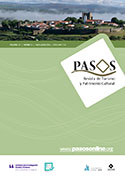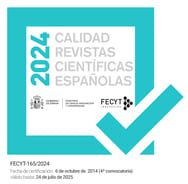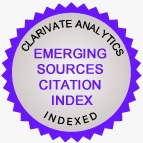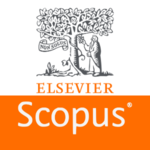Hombres imaginados: representación de cuerpos masculinos y masculinidades en la publicidad turística en Brasil y Costa Rica
DOI:
https://doi.org/10.25145/j.pasos.2025.23.026Palabras clave:
turismo, masculinidad hegemónica, género, Brasil, Costa RicaResumen
Este artículo analiza las representaciones del cuerpo masculino en dos campañas publicitarias específicas de los medios oficiales de turismo de Brasil y Costa Rica, dirigidas a potenciales turistas locales. Por medio de un análisis visual crítico, identificamos la presencia de cuatro categorías recurrentes: el cuerpo heroico como expresión de dominación y/o exploración y movimiento; el cuerpo que encarna los ideales occidentales modernos sobre la familia y la heteronormatividad; masculinidades no hegemónicas, encarnadas en hombres que actúan como anfitriones; y, finalmente, masculinidades ausentes, u hombres que no aparecen, como hombres mayores o con biotipos no hegemónicos realizando aventuras o hazañas heroicas, hombres negros como aventureros u hombres homosexuales con sus parejas o familias diversas. El análisis demuestra que las dos campañas analizadas están guiadas por formas de representación que reproducen un sistema de normas y nociones de género que acercan la representación del hombre a un modelo hegemónico de masculinidad.
Descargas
Datos de publicación
Perfil evaluadores/as N/D
Declaraciones de autoría
- Sociedad académica
- PASOS. Revista de Turismo y Patrimonio Cultural
- Editorial
- Instituto Universitario de Investigación Social y Turismo. Universidad de La Laguna (España) - Instituto Universitario da Maia ISMAI (Portugal)
Citas
Almeida, M. V. de. (1995). Senhores de Si: Uma interpretação antropológica da masculinidade. Lisbon: Etnográfica Press.
Barboza Núñez, E. (2017). El enclave turístico y la imagen del “buen salvaje” americano: un abordaje iconográfico. Estudios y Perspectivas En Turismo, 26(4), 760–780. http://www.scielo.org.ar/pdf/eypt/v26n4/v26n4a01.pdf
Bell, E. (2008). Theories of Performance. Los Angeles: Sage.
Bruner, E. (2005). Culture on Tour: Ethnographies of Travel. Chicago: University of Chicago Press
Campbell, J. (2004). The Hero with a Thousand Faces. Princeton: Princeton University Press.
Connell, R. (2003) Masculinities. Berkeley. University of California Press
Connell, R. W., & Messerschmidt, J. W. (2005). Hegemonic masculinity rethinking the concept. Gender and Society, 19(6), 829–859. https://doi.org/10.1177/0891243205278639
Coles, T.& Church, A. (2007). Tourism, Politics and the Entanglements of Power. In A. Church & T. Coles (Eds.), Tourism, Power and Space. Oxford: Routledge.
Crouch, D. (2007). The power of the tourist encounter. In A. Church & T. Coles (Eds.), Tourism, Space and power, 45-62, Oxford: Routledge
Edensor, T. (2001). Performing tourism, staging tourism. Tourist Studies, 1(1), 59–81. https://doi.org/10.1177/146879760100100104
Enloe, C. (2014). Bananas, Beaches and Bases: Making Feminist Sense of International Politics. Berkeley: University of California Press.
Figueroa-Domecq, C., de Jong, A., & Williams, A. M. (2020). Gender, tourism & entrepreneurship: A critical review. Annals of Tourism Research, 84(July). https://doi.org/10.1016/j.annals.2020.102980
Forsey, M., & Low, M. (2014). Beyond the production of tourism imaginaries: Student-travellers in Australia and their reception of media representations of their host nation. Annals of Tourism Research, 44, 156–170. https://doi.org/https://doi.org/10.1016/j.annals.2013.09.008
Frohlick, S., & Johnston, L. (2011). Naturalizing bodies and places. Tourism Media Campaigns and Heterosexualities in Costa Rica and New Zealand. In Annals of Tourism Research (Vol. 38, Issue 3, pp. 1090–1109). https://doi.org/10.1016/j.annals.2011.01.012
Instituto Costarricense de turismo (2021). Vamos a turistear. Available at: https://www.vamosaturistear.com/ (4/12/2022)
Jiménez, A. (2002). El imposible país de los filósofos. San José: Editorial de la Universidad de Costa Rica.
Jordan. F. (2007). Life’s a beach and then we diet: Discourses of tourism and the ‘beach body’ in UK women’s lifestyle magazines. A. Pritchard, I. Ateljevic, N. Morgan, C. Harris (Eds.), Tourism and gender: Embodiment, sensuality and experience. Wallingford, Oxon: CABI Publishing pp. 92-106.
Kimmel, M. S. (1998). A produção simultânea de masculinidades hegemônicas e subalternas . Horizontes Antropológicos, 4(9), 103–117. https://doi.org/10.1590/S0104-71831998000200007
Kimmel, M. S. (2005). The History of Men, The History of Men, The: Essays on the History of American and British Masculinities. State University of New York Press. https://muse.jhu.edu/book/4899
Kimmel, M. S. (2010). Masculinity as homophobia: Fear, shame, and silence in the construction of gender identity. In S. R. Harper & F. Harris III (Eds.), College men and masculinities: Theory, research, and implications for practice, p. 23–31.
Kock, F., Josiassen, A., & Assaf, A. G. (2016). Advancing destination image: The destination content model. Annals of Tourism Research, 61, 28–44. https://doi.org/10.1016/J.ANNALS.2016.07.003
Little, D. E., & Wilson, E. (2005). Adventure and the gender gap: Acknowledging diversity of experience. Loisir et Societe, 28(1), 185–208. https://doi.org/10.1080/07053436.2005.10707676
Lozanski, K. (2015). Heroes and Villains: Risk and Masculinity. In Thurnell-Read and Casey (Eds.) Men, Masculinities, Travel and Tourism. London: Palgrave Macmillan.
Ministério do Turismo. (2021). Advertising campaign by the Brazil Ministry of Tourism. Available at: https://www.gov.br/turismo/pt-br/assuntos/campanhas/viva-de-perto (4/12/2022).
Molina, I. (2003). Costarricense por dicha: identidad nacional y cambio cultural en Costa Rica durante los siglos XIX y XX. San José: Editorial de la Universidad de Costa Rica.
Moutinho, L. (2014). Diferenças e desigualdades negociadas: Raça, sexualidade e gênero em produções acadêmicas recentes. Cadernos Pagu, 42, 201–248. https://doi.org/10.1590/0104-8333201400420201
Noy, C. (2007). Travelling for masculinity: The construction of bodies/spaces in Israeli backpackers’ narratives. In Prichard et al (Eds) Tourism and Gender Embodiment, Sensuality and Experience. Oxford: CABI
Piscitelli, A. (1998). Gênero em perspectiva. Cadernos Pagu, 11, 141–155. https://periodicos.sbu.unicamp.br/ojs/index.php/cadpagu/article/view/8634469/2393
Pritchard, A., & Morgan, N. J. (2000). Privileging the male gaze: Gendered tourism landscapes. Annals of Tourism Research, 27(4), 884–905. https://doi.org/10.1016/S0160-7383(99)00113-9
Pritchard, A. (2014). Gender and feminist perspectives in tourism research A. Lew, C.M. Hall, A. Williams (Eds.), A tourism companion (2nd ed.), Blackwell, Oxford (2014), pp. 314-324
Porter, B. A., Schänzel, H. A., & Cheer, J. M. (Eds.). (2021). Masculinities in the field: Tourism and transdisciplinary research. Channel View Publications.
Richter, L. (1994) “Exploring The Political Role of Gender in Tourism Research”.In T. William (ed). Global Tourism. Oxford: Butterworth Heiwemann.
Rizzo, M. (2014). The Art of Direction Handbook for Film. New York: Focal Press.
Rose, G. (2001). Visual Methodologies: An Introduction to the Interpretation of Visual Materials. London: Sage
Saffioti, H. (2015). Gênero, patriarcado, violencia. Sao Paulo: Expressão Popular.
Salazar, N. B. (2009). Imaged or Imagined ? Cahiers d’études Africaines, 44(1–2), 49–71.
Salazar, N. B. (2012). Tourism Imaginaries: A Conceptual Approach. Annals of Tourism Research, 39(2), 863–882. https://doi.org/10.1016/j.annals.2011.10.004
Schroeder, J. E., & Zwick, D. (2004). Mirrors of Masculinity: Representation and Identity in Advertising Images. Consumption Markets & Culture, 7(1), 21–52. https://doi.org/10.1080/1025386042000212383
Schroeder, J. E. (2006) Critical Visual Analysis. Handbook of qualitative methods in marketing, Russell Belk, ed., pp. 303-321, Aldershot, UK: Edward Elgar.
Scott, J. (1995). Gender on the Politics of History. New York: Columbia University Press.
Seyferth, G. (1993). A invenção da raça e o poder discricionário dos estereótipos. Anuário Antropológico, 18(1), 175–203. https://periodicos.unb.br/index.php/anuarioantropologico/article/view/6581/7559
Shohat, E & Stam, R. (2001). Unthinking Ethnocentrism: Multiculturalism and the Media. London: Routledge
Small, J. (2017). Women’s “beach body” in Australian women’s magazines. Annals of Tourism Research, 63, 23–33. https://doi.org/10.1016/j.annals.2016.12.006
Thurnell-Read, T. & Casey, M. (Eds) (2015). Introduction. Men, Masculinities, Travel and Tourism. Basingstoke: Palgrave MacMillan.
Wijesinghe, S. N. R., Mura, P., & Tavakoli, R. (2020). A postcolonial feminist analysis of official tourism representations of Sri Lanka on Instagram. Tourism Management Perspectives, 36(July), 100756. https://doi.org/10.1016/j.tmp.2020.100756
Winter, C. (2007). Tourism, Nation and Power: A Foucauldian Perspective of Australia’s Ghan Train. In A. Church & T. Coles (Eds.), Tourism, Space and power, 45-62, Oxford: Routledge
Descargas
Publicado
Cómo citar
Número
Sección
Licencia
Derechos de autor 2024 Rita, Esteban

Esta obra está bajo una licencia internacional Creative Commons Atribución-NoComercial-SinDerivadas 4.0.
Confirmo que el trabajo es original (de mi/nuestra autoría), y que no se someterá a otras revistas o publicaciones hasta la resolución definitiva del proceso de revisión en PASOS, RTPC.
Autorizo la publicación de mi trabajo por PASOS, RTPC de acceso abierto y gratuito en cualquiera de los formatos que estime oportunos, por un plazo indeterminado y a título de colaboración no remunerada.
Asimismo, el/los autor/es entiende/n que el trabajo publicado podrá vincularse o depositarse en cualquier servidor o ser incluido en otras publicaciones (republicación), siempre y cuando el nuevo lugar y/o la nueva edición referencie la publicación original y reconozca la autoría y la propiedad del copyright de las publicaciones de PASOS RTPC.
Los/as autores/as entienden que se realizará una comprobación de plagio-autoplagio, pudiendo retirarse el artículo en cualquier momento del flujo editorial










